Doctor, Soldier, Patriot: Celebrating the life of Dr Lakshmi Sahgal
By Vinutha Mallya
The
queue of women, most of them pregnant, kept growing at the clinic in
the corner of a narrow street in Aryanagar, Kanpur. It was a day in
January 2006, and the morning held a mild chill despite the bright
winter sun. I sat at a distance on one of the wooden benches in the
veranda. The old house located in a labour colony, which served as a
clinic and maternity home, belonged to a bygone era. The veranda was not
an ideal waiting room, but the anxious women did not seem to care. I
was struck by the obscurity of the setting, where we were all waiting to
meet the same woman: the legendary Col (Dr) Lakshmi Sahgal.
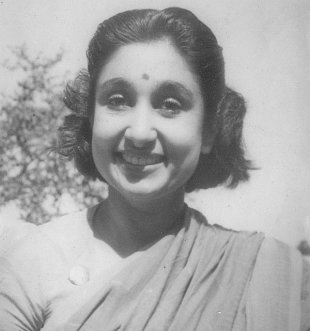 I had to wait until the women,
who had come from all over Kanpur and some from nearby Lucknow, had
finished their turn. Unlike them, I was there to interview the doctor.
Although her staff received me politely, I knew better than to expect to
receive any preference in her schedule.
I had to wait until the women,
who had come from all over Kanpur and some from nearby Lucknow, had
finished their turn. Unlike them, I was there to interview the doctor.
Although her staff received me politely, I knew better than to expect to
receive any preference in her schedule.Many of her patients came from families who were struggling for employment after the mills of Kanpur had shut. The loss of livelihoods has not just affected their access to healthcare facilities, but it had also affected the education of their children. "As my fees are little, my clinic is always full," she said to me later.
Each time the door of the consultation room opened, I would catch a glimpse of the doctor inside, getting ready to attend to her next patient with the help of two other doctors. The room was small, with a table, two chairs, and a bed on which patients were examined.
I sat there wondering how many of her patients knew that the sprightly nonagenarian was a celebrated warrior of India's freedom movement; that she had held command of the Rani Jhansi Regiment of Subhash Chandra Bose's Indian National Army; and she was the first Indian woman to contest the Presidential elections, in 2002, when President A P J Abdul Kalam was elected.
When I was a school student, I was enamoured by the heroines of history that had made their way into our textbooks, perhaps also because they were so few. History textbooks of that time ended with India's long and glorious freedom struggle, in which Netaji and the INA were a small mention. Lakshmi Sahgal was perhaps the last heroine to be mentioned. I hadn't foreseen then that I would get to meet her some day.
I had first met her in 2005, when she visited her sister Mrinalini Sarabhai in Ahmedabad. By then I had heard many stories first-hand from Mrinalini, of their childhood years in Madras (now Chennai). Although they had a "very British" upbringing, their exposure to political life began at the height of India's struggle for freedom. Their mother, Ammu Swaminadhan, a prominent figure in Madras society was active in the Congress. She became a member of the All India Women's Conference when Lakshmi was entering college after SSLC.
Born on October 24, 1914, Lakshmi was the second child of Ammu and Subbarama Swaminadhan. Her father was a radical lawyer, from the Palghat Iyer community, who defied caste rules to marry her mother, a Nair girl from the Vadakkath family in Anakkara, Palakkad district. She grew up in an environment free from caste and religious prejudices, and the sisters were never treated differently than their brothers Govind and Subbaram. Her mother was involved with the Congress and the nationalist movement. By the time they were in their youth, Lakshmi and Mrinalini had interacted with many prominent personalities in her home at Gilchrist Gardens in Madras.
A young Dr Lakshmi
Over her two-week stay in Ahmedabad at the Sarabhai home, in 2005, I had the opportunity to meet her a few times. Unlike in the photos of her youth, where her hair was worn long, she was wearing it short now — a shock of grey. It gave her a youthful look. Her twinkling eyes and charming smile were captivating. Her contagious enthusiasm, and her interest in the world around her was enough to easily draw one into a conversation with her. She was clearly enjoying the time she was spending with her sister and her family. Lakshmi was known to have been a beauty in her youth, and there was every trace of it radiating in her face at age 90.
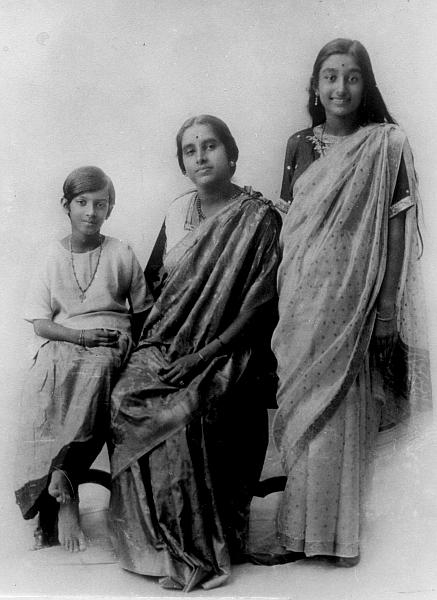 A year later, I was waiting for my turn with her at her clinic in
Kanpur. My timing was not great: there was a wedding in the family the
following week. Nevertheless, she agreed to meet me for the interview.
After arriving by the Shatabdi from Delhi, I made my way to her clinic
directly, in the hope that I would get some time with her there. "She
leaves the clinic at 2 pm every day," her daughter Subhashini had
alerted me in an email ahead of my visit.
A year later, I was waiting for my turn with her at her clinic in
Kanpur. My timing was not great: there was a wedding in the family the
following week. Nevertheless, she agreed to meet me for the interview.
After arriving by the Shatabdi from Delhi, I made my way to her clinic
directly, in the hope that I would get some time with her there. "She
leaves the clinic at 2 pm every day," her daughter Subhashini had
alerted me in an email ahead of my visit. At around 2 pm, Dr Sahgal and I set off in her car to go to her home
in Civil Lines, where she lived with Subhashini. Along the ride, she
quizzed me on the political drama unfolding in Karnataka, my home state.
The government led by the then chief minister Dharam Singh was facing a
precarious future, and she was following the developments keenly. My
experience of having spent time with her sister, too, had shown me that
their deep interest in national politics and development issues, and
their active participation in it, was a family legacy.
At around 2 pm, Dr Sahgal and I set off in her car to go to her home
in Civil Lines, where she lived with Subhashini. Along the ride, she
quizzed me on the political drama unfolding in Karnataka, my home state.
The government led by the then chief minister Dharam Singh was facing a
precarious future, and she was following the developments keenly. My
experience of having spent time with her sister, too, had shown me that
their deep interest in national politics and development issues, and
their active participation in it, was a family legacy.
EARLY INFLUENCES
However passionately Lakshmi had felt about fighting for freedom, she did not respond to Gandhiji's call to students to leave their studies and join the Civil Disobedience Movement. She felt that India would need well-educated and trained professionals once freedom came. She qualified for the MBBS degree in 1938 and obtained her diploma in gynaecology and obstetrics a year later. Soon after, she moved to Singapore and worked as a doctor there.
INA AND THE WAR YEARS
She joined the Indian National Army in 1943, after being drawn to Netaji Subhas Chandra Bose and to his idea of raising a women's regiment named after Rani Lakshmi Bai. She was soon offered the command of the Rani Jhansi Regiment with the rank of a captain (she was later promoted to the rank of lieutenant colonel). In Netaji she found a leader in whom she placed her absolute trust and loyalty. Like him, she felt, "that the final blow for independence would have to come from armed struggle".
Although her regiment never went into active combat when the INA fought alongside the Japanese against the British, the Ranis experienced the harshness of the war. She was taken prisoner in the Karen Hills (eastern Burma) in early1945. The region was in war chaos and the British commander decided to send the prisoners of war and refugees to Toungo, a 100-mile journey by foot, which took 10 days. Lakshmi's description of this walk captures the horrors of the war, but to touching detail — like how difficult it was for her Keralite blood to not bathe and change clothes for 10 days! She remained in Burma to provide medical care for the troops.
Upon her return to India in March 1946, she became disillusioned with the Congress and the political environment, and she decided not to be drawn into the public arena "come what may". While the Congress wanted to patronise the INA, the communists would not have anything to do with them. "They just branded us fascists and didn't give us another chance," she said. Lakshmi was also upset at the journalists who glamourised Netaji, and INA officials like her, instead of trying to understand the movement that he had built.
She continued her medical work and got involved with the welfare of returning troops, and after Independence, with refugees' rehabilitation.
KANPUR
Dr Sahgal's autobiography mentions little about her personal life. She married P K N Rao, a pilot with Tata Airlines, while she was still studying for the MBBS degree. Within three months she felt it was a mistake, and returned from Bombay to Madras to continue with her studies. Rao, who didn't forgive her, did not give her a divorce. So, when she fell in love with a classmate at Madras Medical College, unable to marry and live together, the couple left for Singapore. But that friend, who also joined the INA, did not like her getting involved in it, and the relationship ended.
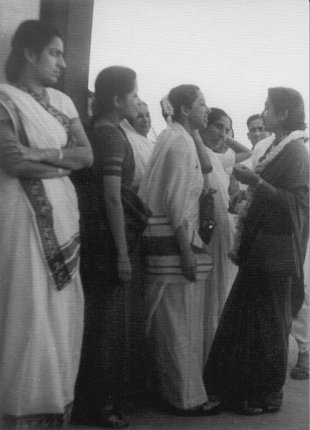 In
Singapore she met Prem Sahgal, a soldier from the Indian Army who had
joined the INA. She said that it was he who decided more than her that
they should spend the rest of their life together. He supported her in
everything that she did. "He was the kind of person who when he took up
something, give it his all," she said. They married in March 1947. Col
Prem Sahgal had accepted a job as a junior executive in a textile mill
in Kanpur. "After a quiet wedding we came to Kanpur, a dirty,
disease-ridden city from which there seems to be no escape," she felt.
In
Singapore she met Prem Sahgal, a soldier from the Indian Army who had
joined the INA. She said that it was he who decided more than her that
they should spend the rest of their life together. He supported her in
everything that she did. "He was the kind of person who when he took up
something, give it his all," she said. They married in March 1947. Col
Prem Sahgal had accepted a job as a junior executive in a textile mill
in Kanpur. "After a quiet wedding we came to Kanpur, a dirty,
disease-ridden city from which there seems to be no escape," she felt.Lakshmi settled down in Kanpur to a non-political life. "I would have liked to settle down in the south, in Madras. But you know how it is. Being a north Indian, Prem would have found it difficult to adjust to the south. We south Indians can adjust more easily to the north," she told me knowingly, as I was a south Indian too. (Col Prem Sahgal passed away in 1992.) I was again reminded then that despite having lived in north India for nearly 60 years, her Hindi was not strong. Her accent revealed the flavour of mellifluous Malayalam.
Their house was always open to progressive, non-communal people. Lakshmi had begun her medical work to serve underprivileged women and children. Her daughters, Subhashini and Anisa were born soon. After she opened the clinic, she also started working in a municipal dispensary, which, for several years, had not been able to get a woman doctor. She also trained several women as medical aides and midwives. For a while she also tried her hand at farming in the foothills of Nainital, and became an expert in driving a tractor, and supervising sowing and other operations.
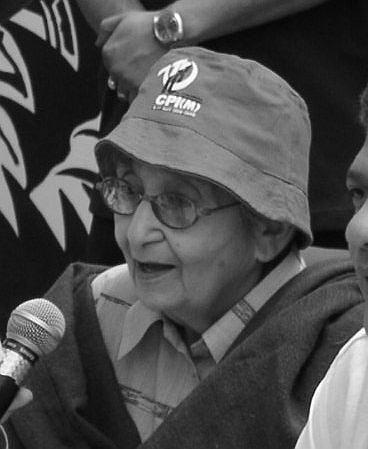 The couple unhappily watched the INA disintegrate, even though they
tried to set up an independent non-political welfare organisation to
preserve its identity.
The couple unhappily watched the INA disintegrate, even though they
tried to set up an independent non-political welfare organisation to
preserve its identity.COMRADE LAKSHMI
Lakshmi became restless politically, unsatisfied with the way things were going. "The fruits of independence were benefiting only a few — the white rulers had been replaced by darker ones."
When her daughter Subhashini (Ali, now a prominent labour activist) joined the Communist Party of India (Marxist), Lakshmi got involved with the Party's activities, and later opened a clinic for families of workers. Gradually, she was accepted by the Party in her own right and received her membership in 1972. She was one of the founding members of the All India Democratic Women's Association (AIDWA), set up by the Party. "My own belief was, and still is, that only some form of socialism suited to our ethos can help towards solving our problems," she wrote.
The Government of India presented Col (Dr) Lakshmi Sahgal with the Padma Vibhushan in 1998, in recognition for her service to the nation. The Left parties nominated her candidacy for the Presidential election in 2002, during which time she said, "My one-point objective would be to maintain the unity and integrity of this great nation."
THE GOOD DOCTOR
We talked about the junior doctors who were striking in Lucknow and Kanpur that day. "The doctors should not take it out on the poor patients," she rued, going on to express her disappointment at the degeneration of the medical profession. "Doctors are more concerned with making money. In many nursing homes, they admit practically dead patients, keeping them alive using gadgets, milking the families for money."
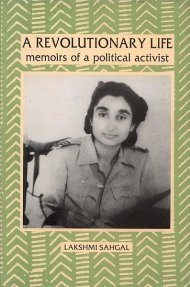 The scene was not very different in politics either, she complained. "The politicians these days are more interested in netagiri than
in patriotism." Looking at the country now, did she expect things to be
this way when they struggled for freedom, I asked her. "We had expected
a more egalitarian society with social justice," she said, looking me
directly in the eye. We are hardly moving towards it. Otherwise, why
should I still be working at the age of 91?" she asked.
The scene was not very different in politics either, she complained. "The politicians these days are more interested in netagiri than
in patriotism." Looking at the country now, did she expect things to be
this way when they struggled for freedom, I asked her. "We had expected
a more egalitarian society with social justice," she said, looking me
directly in the eye. We are hardly moving towards it. Otherwise, why
should I still be working at the age of 91?" she asked.
Her voice held a strength that came from the courage of convictions, which guided her throughout her life.
She had sustained her clinic for
decades. She spoke of how her clinic did not contain a surgical unit,
which she wished she could have had. There was a shortage of space and
she could only admit a few patients. "It is not doing so well since the
last two years," she told me then. Every day of the week she would be at
the clinic by 9 am. When she passed away on July 23, 2012, it was
reported that she saw patients until the end.
I was not surprised.
Vinutha Mallya is a freelance journalist and publishing consultant
NOTE:
These rare photographs have been made available by kind courtesy of
Mrinalini Sarabhai, Darpana Academy, Ahmedabad. All other photographs
are in the public domain.
Source: Yahoo
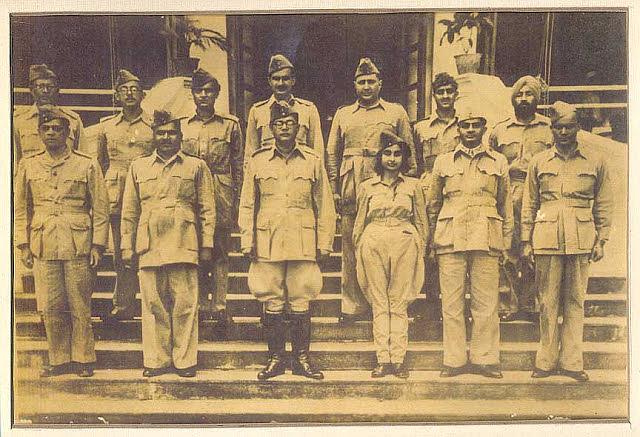
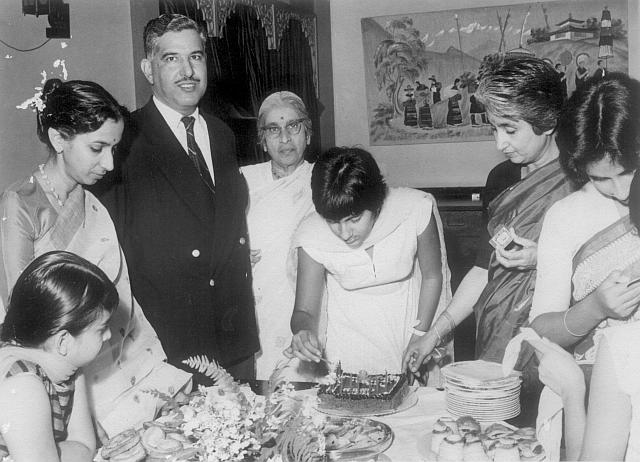
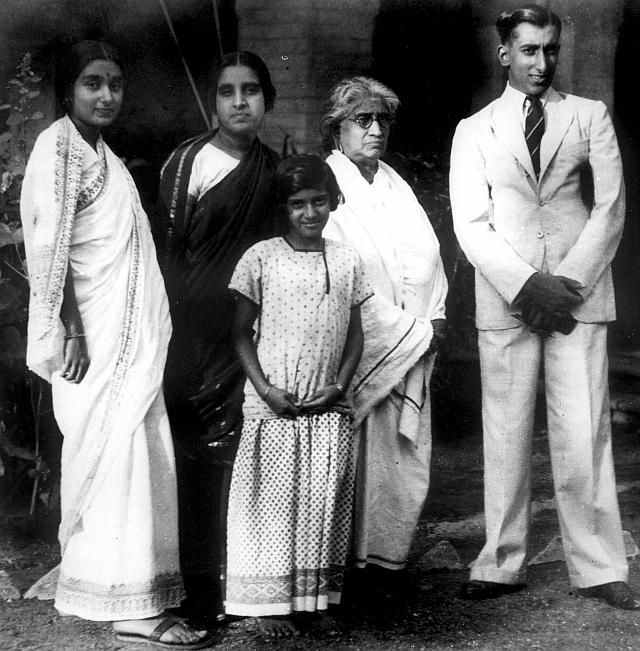
Comments
Post a Comment